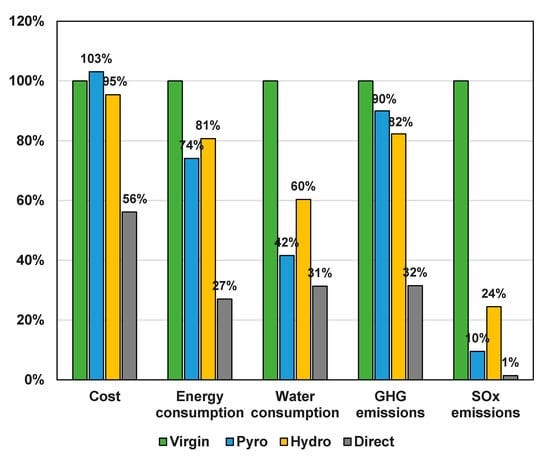Hello Human,
No better way to celebrate my 28th birthday than publish an article on battery recycling🎉🤓
This deep dive on battery recycling is a continuum to my previous article on energy transition metals, a.k.a critical minerals.
In this deep dive, I cover the importance of battery recycling, different recycling technologies, and startups building novel battery recycling methods and factories.
➡️Follow Survivaltech.club on Twitter and Linkedin
🧠Updates
🌍Candice Ammori launched Climate Vine, a membership community that helps members accelerate their climate impact.
Each curated group of Climate Vine Members has diverse backgrounds. The annual membership starts with a 3-month themed cohort during which Members spend about 1-3 hours a week in curated small groups, socials, and off-the-record conversations with climate leaders.
I absolutely loved my experience at On Deck Climate Tech last year, which Candice built and led. I know Climate Vine will be awesome!
🗞️Anisah Osman Britton from Sifted featured me and other EIRs in European VCs in an article on the Entrepreneur-in-Residence concept.


🔋A tsunami of used batteries on the horizon
The energy transition is here, and the world is electrifying rapidly. EVs have rolled out to the mass market, and even battery-electric aviation is coming [Survivaltech.club’s article on sustainable aviation].
IEA estimates 50% of the global car stock to be electric by 2040 in is sustainable development scenario (SDS) that reaches the Paris Agreement goals. As lithium-ion batteries have an average lifetime of 15-20 years, a lot of used EV batteries will eventually come to the end of their life.
In 2030, 100 GWh of batteries from EVs and energy storage are expected to reach the end-of-life 2030. This number will grow rapidly to over 1300GWh in 2040.

🌎The climate impact of battery recycling and reuse
We have to responsibly deal with this growing amount of used batteries in the coming years so that it won’t create another environmental problem.
Battery recycling can also reduce the demand for the energy- and emissions-intensive primary production of critical minerals. IEA estimates that battery recycling and repurposing can reduce the primary supply requirement for some minerals like cobalt by 12% and nickel by 8% by 2040.
Luckily, there is also a strong economic and political incentive to recycle batteries. Used batteries hold critical minerals that are expected to be in short supply in the upcoming decades and are a geopolitical concern for many countries.

♻️Reuse vs. Recycle
When a battery comes to the end of its life, there are typically two options: 1) Reuse & 2) Recycling.
1. Reuse
An EV battery has around 80% of its capacity left when it no longer meets the standards to be used in an EV. The used EV battery still has enough capacity to power other applications, such as stationary storage in buildings and the electric grid.
Repurposing a battery is generally considered a better option than recycling, as much value is embedded in the partially depleted yet functioning battery.
2. Recycling
If the battery cannot be reused, valuable battery materials can be recovered via recycling.
Notably, most recyclable battery material will originate from battery production in this decade (“Process Scrap“ in the figure below). I was shocked to learn that battery factories can produce 30% scrap of the total battery production when ramping up the manufacturing and 10% on average when operating.
The end-of-life batteries (“EOL Scrap“ in the figure below) will overcome battery manufacturing scrap only by the mid-2030s.

⚙️Battery recycling technologies
Battery recycling starts with collecting and sorting end-of-life batteries. Some recycling technologies (usually hydrometallurgy and direct recycling) require the battery to be discharged, dismantled, and shredded before entering the next step in the recycling process.
There are three main methods for recycling lithium-ion batteries:
Pyrometallurgy
Hydrometallurgy
Direct recycling

In reality, most commercial processes use both pyro- and hydrometallurgy in battery recycling. Direct recycling has a lower technology readiness. The US Department of Energy’s ReCell center strongly focuses on developing direct recycling methods.
1. Pyrometallurgy
Pyrometallurgy uses a high-temperature (+1100°C) furnace to melt the battery and reduce its metal oxides to an alloy of cobalt, copper, and nickel. The resulting alloy must then be treated hydrometallurgically to separate the metallic elements.
A battery’s lithium, aluminum, and manganese end up in slag. The slag can be sold to the cement industry, or the metals can be separated via a hydrometallurgical process.
Pyrometallurgical processes require a lot of energy and produce toxic gases. Furthermore, they typically target only cobalt and nickel, the most valuable materials. The carbon anode, electrolyte, and plastics are lost. (Electrolytes and plastics are approximately 40–50% of the battery weight!)
2. Hydrometallurgy
Hydrometallurgy uses acids, such as sulfuric acid and hydrogen peroxide, to leach the desired metals. In the leaching process, the crystal structure of the cathode material is broken.
After leaching, the metals are recovered via a series of precipitation methods. Learn more about the hydrometallurgical process in the video below:
Usually, the value of a hydrometallurgical process lies in the cobalt recovery. The carbon anode, however, could be recovered if it was economical or demanded by laws.
3. Direct recycling
Direct recycling recovers the battery components without breaking down their chemical structure. This method is also known as direct cathode recycling and cathode-to-cathode recycling.
Direct recycling contains a series of processes that separate the different battery components and then add lithium back to the cathode material (relithiation) lost upon battery use. Read more about direct recycling here.
Comparison of battery recycling technologies
Every battery recycling technology comes with its pros and cons. These two graphs illustrate well the differences between the three recycling technologies.


🚀Battery recycling startups
Battery recycling startups have been in the news lately. All the following announcements were done during this month (February 2023):
Redwood Materials, a US battery recycling startup, got a $2B loan from the US Department of Energy to construct and expand its Nevada battery materials campus.
Cirba Solutions, a US battery recycling startup, got a $50M investment from Marubeni Corporation. (In December 2022, it raised $245M from EQT Infrastructure V Fund.)
Cylib, a German battery recycling startup, raised €8M seed extension led by World Fund.
Other prominent battery recycling companies include Li-Cycle, Ascend Elements, Glencore, Umicore, Nth Cycle, Universe Energy, Li Industries, OnTo Technology, and RecycLiCo.
The race for mining battery manufacturing scrap and end-of-life batteries is on.
I’d love to hear feedback and connect with fellow climate people! Contact me at pauliina@survivaltech.club, Twitter, or LinkedIn.
➡️Follow Survivaltech.club on Twitter and Linkedin
If you enjoyed this article, please share it with your network!🌍
Not a subscriber at Survivaltech.club yet? Let’s change that✅
Best, Pauliina💚
Sources
Baum et a. (2022). Lithium-Ion Battery Recycling - Overview of Techniques and Trends. Link.
Gaines et al. (2021). Direct Recycling R&D at the ReCell Center. Link.
Harper et al. (2019). Recycling lithium-ion batteries from electric vehicles. Nature, 575, 75-86. Link.
IEA (2021). The Role of Critical Minerals in Clean Energy Transitions. Link.
Volta Foundation (2023). Annual battery report - 2022. Link.




